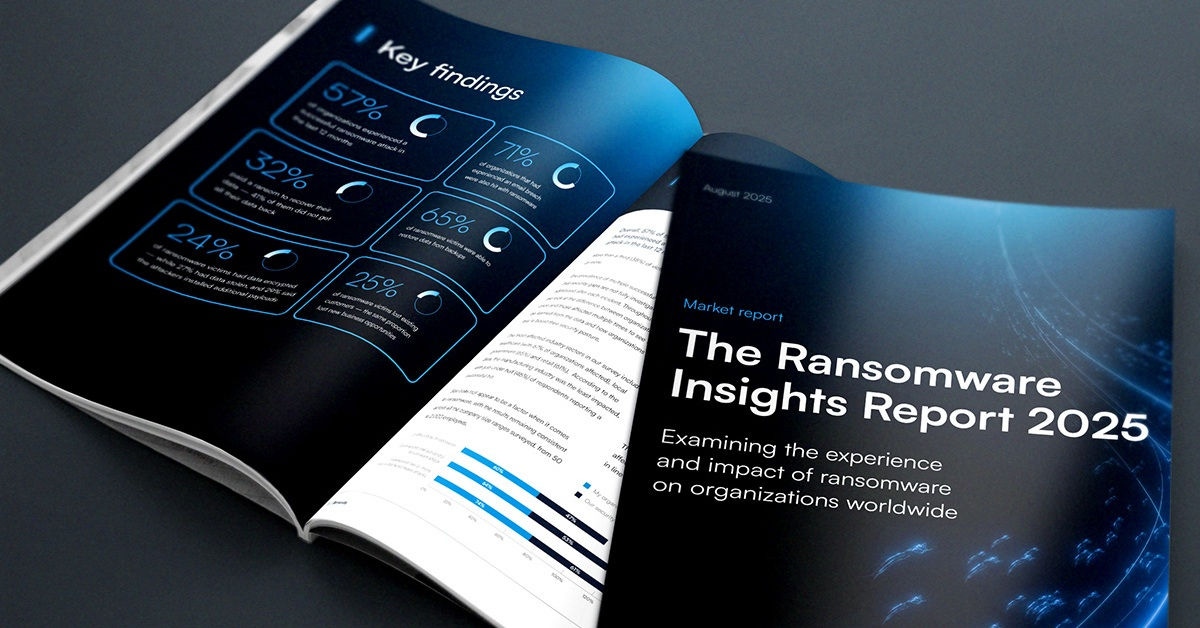
¿Cómo puede la IA ayudar a los investigadores de OSINT?
La inteligencia de fuentes abiertas (OSINT) está ganando más atención debido al volumen masivo de datos digitales generados diariamente por dispositivos informáticos, sensores de Internet de las Cosas (IoT) y las interacciones de las personas en las plataformas de redes sociales. Las agencias gubernamentales y las organizaciones empresariales se han apresurado a explotar la OSINT para recopilar y analizar datos públicos debido a su rentabilidad y al valioso valor de inteligencia que puede proporcionar a sus adoptantes.
Sin embargo, como ocurre con toda tecnología, el OSINT tiene algunos inconvenientes y desafíos. Los dos más obvios son el gran volumen de datos digitales y los recursos asociados (por ejemplo, tiempo y experiencia) necesarios para analizar los datos recopilados. Afortunadamente, la inteligencia artificial (IA) ha surgido para resolver estos desafíos, y en esto nos centraremos en este artículo.
¿Cómo se puede aprovechar la tecnología de IA para asistir a los recopiladores de OSINT?
La IA puede mejorar enormemente las capacidades de los investigadores de OSINT automatizando tareas, analizando grandes volúmenes de datos digitales que contienen tanto datos estructurados como no estructurados, y descubriendo perspectivas que los analistas humanos podrían pasar por alto. Estas son las formas más destacadas en las que la IA puede ayudar a los investigadores de OSINT:
Recopilación de datos
La primera tarea de los recopiladores de OSINT es recoger datos de fuentes disponibles públicamente según un plan predefinido. Aunque no discutiremos un plan preferido de OSINT en este artículo, la recopilación de datos consume un tiempo considerable para los recopiladores de OSINT, ya que puede abarcar muchos recursos en línea según el caso investigativo. La tecnología de IA puede ayudar proporcionando raspadores web inteligentes que aprovechan la tecnología de aprendizaje automático (ML) para recopilar datos de manera inteligente según las solicitudes del usuario. Por ejemplo, los raspadores web impulsados por IA pueden hacer lo siguiente:
- Maneja contenido dinámico fácilmente y sin intervención humana. Por ejemplo, muchos sitios web utilizan JavaScript para generar contenido dinámico a medida que los usuarios interactúan con el sitio web. Los rastreadores impulsados por IA pueden obtener y recopilar dicho contenido imitando el comportamiento de navegación humano.
- Los rastreadores web impulsados por IA pueden eludir las medidas anti-rastreo implementadas por algunos sitios web mediante patrones de comportamiento adaptativos y rotación de firmas de red.
- Correlacionar datos automáticamente de múltiples fuentes y establecer conexiones entre puntos de información aparentemente no relacionados
- Reunir datos no estructurados, como texto libre, texto en documentos PDF y archivos TXT, e insertarlos en un formato de datos específico, como una hoja de cálculo de Microsoft Excel, según la solicitud del usuario.
- Extraer datos en un horario predefinido y actualizarlos nuevamente con nueva información cuando la fuente cambie.
- Analizar el sentimiento y el contexto detrás de los datos recopilados utilizando tecnología de procesamiento de lenguaje natural (NLP) y categorizar los datos recopilados en consecuencia.
Procesamiento de lenguaje natural (NLP)
NLP es una subrama de la tecnología de IA que puede comprender texto humano. Al aprovechar la tecnología NLP, los recolectores de OSINT pueden hacer lo siguiente:
- Extraer entidades clave del contenido del texto, tales como nombres, ubicaciones, ciudades, nombres de países y fechas.
- Crear mapas de relaciones entre entidades nombradas, mostrando conexiones entre personas, organizaciones y ubicaciones mencionadas en los datos recopilados
- Traduce contenidos en lenguas extranjeras a cualquier otro idioma, como traducir del árabe o chino al inglés, permitiendo a los investigadores de OSINT utilizar recursos extranjeros en su investigación.
- Resume documentos de texto extensos y proporciona información clave en un resumen conciso.
Facilitar el análisis de imágenes y vídeos
Durante sus investigaciones, los investigadores de OSINT con frecuencia necesitan analizar archivos multimedia, como imágenes y archivos de vídeo. La IA puede facilitar y agilizar el análisis de contenido multimedia a través de lo siguiente:
- Identificación automática de objetos en imágenes y vídeos. Las herramientas impulsadas por IA pueden identificar objetos como rostros humanos, animales, edificios u otros objetos en imágenes y vídeos y extraerlos automáticamente.
- Capacidades avanzadas de reconocimiento óptico de caracteres (OCR) que pueden extraer texto de medios visuales complejos, incluidos documentos manuscritos e imágenes de baja resolución
- Análisis exhaustivo de metadatos para extraer información oculta sobre la creación de la imagen, la fecha de modificación y las coordenadas GPS, si están disponibles
- Las herramientas de reconocimiento facial impulsadas por IA pueden identificar el rostro de una persona específica en grandes cantidades de imágenes y vídeos.
- Verificación de imágenes y videos recopilados, incluyendo la detección de varios tipos de manipulación más allá de deepfakes
Inteligencia en redes sociales
Las herramientas impulsadas por IA pueden recopilar y analizar grandes volúmenes de contenido publicado en plataformas de redes sociales. Puede facilitar el trabajo de los recopiladores de OSINT al:
- Identificación de patrones de comportamiento complejos en múltiples plataformas de redes sociales para detectar actividades coordinadas
- Generar mapas detallados de relaciones de red para entender el flujo de información y los principales influyentes en una comunidad en línea específica, como un grupo de Facebook o un subreddit
- Detección y análisis de cuentas de bots
- Identificación de temas de tendencia, hashtags o conversaciones en numerosas plataformas de redes sociales
Información sobre amenazas
Las herramientas impulsadas por IA se han convertido en un componente crítico en el arsenal de inteligencia de amenazas cibernéticas que mejora las capacidades de OSINT.
- La tecnología de IA tiene la capacidad de analizar grandes cantidades de datos de amenazas para identificar patrones que puedan indicar nuevos vectores o técnicas de ataque.
- La IA puede extraer automáticamente indicadores de compromiso (por ejemplo, direcciones IP, nombres de dominio, hashes de archivos) de diversas fuentes, como fuentes de amenazas, redes sociales y foros de la web oscura.
- La IA puede analizar datos históricos para predecir amenazas futuras
- La IA puede correlacionar datos de diversas fuentes (por ejemplo, flujos de inteligencia de amenazas, sitios de redes sociales, web oscura, registros internos como logs de soluciones de seguridad y logs de dispositivos de redes) para establecer la credibilidad y gravedad de una amenaza.
Capacidades de búsqueda mejoradas
Las herramientas de búsqueda impulsadas por IA pueden comprender las consultas de búsqueda de los investigadores de OSINT basándose en su contexto, lo que ayuda a los investigadores a obtener resultados más precisos de los motores de búsqueda. Las soluciones de IA también pueden navegar y extraer datos de partes menos accesibles de internet, como sitios web profundos y oscuros.
Simplificar y ayudar en la verificación y comprobación de hechos
Parte de los datos recopilados podría ser desinformación o datos incorrectos. Los investigadores de OSINT no pueden incorporar datos en su investigación hasta que estén seguros de que son precisos y confiables. Las soluciones impulsadas por IA pueden ayudar en la fase de verificación y comprobación de hechos. Por ejemplo, las soluciones impulsadas por IA pueden verificar fuentes de datos para identificar qué fuentes son confiables o no. Estas soluciones también pueden buscar en línea para cotejar datos con otras fuentes y medir su veracidad.
Análisis geoespacial
Una ventaja importante de las soluciones impulsadas por IA es su capacidad para analizar contenido como imágenes y vídeos además de sus metadatos para localizar su ubicación geográfica. Por ejemplo, la IA puede analizar datos geolocalizados en plataformas de redes sociales para rastrear movimientos o identificar puntos de actividad. Las imágenes adquiridas de satélites pueden ser analizadas automáticamente para detectar cambios en el terreno, la infraestructura u otras características.
Informes automatizados
La última fase de cualquier tarea de recopilación OSINT es la elaboración de informes. La tecnología de IA puede preparar mejor y generar informes OSINT que incorporen hallazgos clave de manera organizada. Por ejemplo, la IA puede ayudar a recopilar datos en informes estructurados, completos con visualizaciones y resúmenes.
La tecnología de IA está revolucionando la investigación OSINT al abordar desafíos clave en la recopilación de grandes volúmenes de datos digitales y su análisis. La tecnología de IA mejora las capacidades de OSINT mediante la recopilación inteligente de datos, el procesamiento avanzado del lenguaje natural y el análisis automatizado de multimedia. Las herramientas impulsadas por IA sobresalen en el procesamiento de contenido de redes sociales, la generación de inteligencia de amenazas y la realización de análisis geoespacial preciso. Estas herramientas pueden identificar patrones complejos, extraer información crucial de diversas fuentes y hacer referencias cruzadas de datos para su verificación. La IA también agiliza el proceso de investigación al automatizar tareas de informes y mejorar las capacidades de búsqueda en fuentes de la web superficial, profunda y oscura. Esta integración tecnológica permite a los investigadores de OSINT centrarse en tareas analíticas de alto valor mientras automatizan procesos manuales que consumen mucho tiempo.

Informe de Barracuda sobre Ransomware 2025
Principales conclusiones sobre la experiencia y el impacto del ransomware en las organizaciones de todo el mundo
Suscríbase al blog de Barracuda.
Regístrese para recibir Threat Spotlight, comentarios de la industria y más.

Seguridad de vulnerabilidades gestionada: corrección más rápida, menos riesgos, cumplimiento normativo más fácil
Descubra lo fácil que es encontrar las vulnerabilidades que los ciberdelincuentes quieren explotar.





